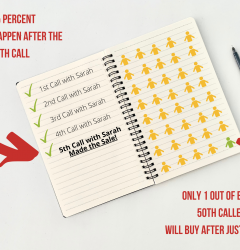
Knowing what your sales report means is just as important as how you build it. By implementing a few tips on how to build your sales report, you will soon have data to specifically cater to your needs. Did we also mention there is a FREE sales reports template?!
What Is a Sales Report?
A sales report is an overview of all the sales activities that occurred over a period of time. It will also reveal any trends in the sales that occur and it will show the performance of the sales team.
Sales reports are also a great way to identify whether you need to change something in your overall strategy. If you find that your overall strategy could use an update, feel free to check out our full guide on building a sales strategy.
Why Are Sales Reports Important?
The report’s purpose is to provide meaning and feedback about the company’s profit, goals that were reached, how the sales team progressed, etc.
Sales managers have to be able to interpret what the report means and be able to make decisions based on its results. They should also be able to forecast future sales revenue and give new goals based on the goals met in the past, according to the report. To give a better understanding on the importance of the sales report, here are a few things that the sales report determines:
- The revenue gained on behalf of the sales team
- How each product or service does on the market (how many are sold)
- The frequency of your sales teams calls with any given customer and how often they make the sale. Also how often the salespeople follow-up with customers.
- The success of each platform to turn potential customers into customers
- The productivity of your sales team
How to Create Useful Sales Reports?
The best way to make useful sales call reports is by automating as much as possible. This can be done by using different software. We’ve listed the most useful in our article on Sales Process Automation. Another option to automate your calling reports is through the Power Dialer. It makes useful reports based on specific time periods with the click of a button that can show which users are being productive and which may need some additional coaching!
Identify the Goal of the Sales Report
As the sales manager, you must know the purpose of all of the sales reports so you can identify what pieces of information are particularly important to helping you understand where your team is at in terms of reaching that goal. If you are having a hard time identifying what you want to see out of your sales report then start by asking yourself some questions to identify the goal. Questions like:
-What is my sales team lacking on?
-What could be improved or what isn’t doing as well as I thought it was?
-Are there any sales trends and if so what are they?
-How effective is _______?
These will get you started, to help you identify the goal you want to achieve and ultimately what factors are most important in identifying to understand where you are in comparison to the goal.
Focus on ‘Who the Sales Report is For’
Now that you have identified the purpose for the sales report, you need to define who the report is for or who will be using the report.
Is it to relay information to the marketing team about the progression or regression of sales on a certain product?
Is it for the executive team of the company? To show the quota that was met?
Whoever the sales report is for, keep in mind what information will be most useful and relevant for them. Also portray the report in a way that will most appeal to the audience.
Define the Metrics You Will Include in the Sales Report
The metrics might differ in your sales reports over time, because goals change, the audience for the report changes, and so does the market. Therefore, so will the metrics. We will give a list of metrics that you might consider including in your sales report:
- KPI’s
- Number of goods sold
- Sales per sales rep
- Average purchase value
- Lead conversion rate
- Product performance
- Sales growth
- Customer acquisition rate
For specific metrics on calling, refer to our blog on the 9 top calling metrics to track.
Set a Time Period for Your Sales Report
It won’t do you any good if you don’t have a start and end date. In this step, you will want to define the time period to focus on. It’s usually a good idea to take two different time periods—current and previous—and draw a comparison. Once you have created enough reports and are able to compare then to previous months/years you will be able to recognize growth, regression, and buying trends. The time period also strongly depends on the product/brand.
Put the Numbers into Context in the Sales Report
Find examples or the reason for the metrics you receive. For your audience, it can be difficult or confusing trying to understand what the metrics mean or represent. For instance, if the marketing team were to see a 15% decrease in profit on product B, they could assume it’s because the promotion they implemented is unsuccessful. Whereas it actually had a decrease because customers that typically purchase that product are in an area that just experienced a natural disaster.
Giving context will help your audience understand the meaning behind the metrics and help them avoid making hasty decisions.
Use a Sales Report Template
Having a template will save you precious time. You will be creating reports often, so you might as well save yourself the time and effort by creating a template that you can use each time.
We have a resource that is perfect if you are looking to build your sales call report. Check out our article ‘How to Create Useful Sales Call Reports + Templates’ to start now!
Sales Report Template FREE
Your FREE sales report template awaits! Feel free to use this sheet created just for you:
https://docs.google.com/spreadsheets/d/10_28uUyg0bKM8cN3xFSyZTJdUiJgwyvj-5euU4uHx88/edit?usp=sharing
As the manager you spend so much of your time managing your team that you rarely have time to work on your own professional development. Since you might not have time to attend a conference or manager workshop, we created a blog to quickly refresh your memory on how to be a good sales manager.
Works Cited
sheikh, M., 2021. How to create a successful sales report. [online] The Close Sales Blog. Available at: <https://blog.close.com/how-to-create-a-sales-report/> [Accessed 3 March 2021].
Baker, K., 2021. The Ultimate Guide to Sales Management. [online] Blog.hubspot.com. Available at: <https://blog.hubspot.com/sales/sales-management> [Accessed 3 March 2021].
Zeisig, K., 2021. 12 sales metrics to kick-start your sales analytics. [online] Klipfolio.com. Available at: <https://www.klipfolio.com/blog/sales-analytics-12-metrics> [Accessed 4 March 2021].


